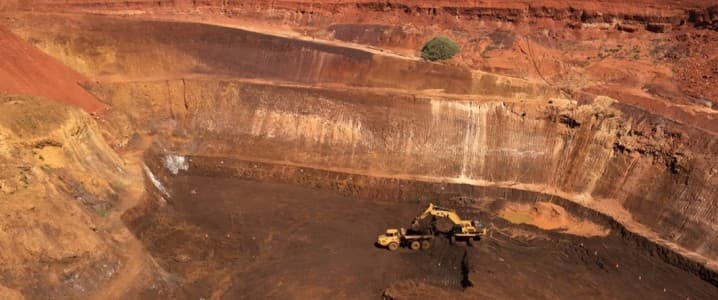The United States and Australia this week closed a deal to cooperate in the development of a local critical mineral supply. The deal, worth more than $3 billion, according to the White House, could open up access to resources worth $53 billion or more. Theoretically, but it’s a good start.
Critical minerals first came to the fore as a hot issue during the Biden administration, which realized the U.S. was uncomfortably dependent on China for its supply, which was vital for advancing the energy transition agenda. Yet critical minerals are not only used in electric vehicles or wind turbines. They are essential for the auto industry and, more importantly, the defense industry. So, one of the few Biden admin decisions that President Trump did not roll back was the prioritization of critical minerals supply.
The issue got even hotter earlier this year when Trump launched the trade war against China, which retaliated with export controls on critical minerals, hardening Washington’s resolve to secure an alternative supply. The decision was a simple one to make. The problem is that building a critical minerals supply and processing chain would take a very long time and cost a lot of money. It is in this context that the Australia deal is a good start, if not much else.
Related: U.S. Rare Earth Company Signs Strategic Deal With Japanese Government
Australia is one of the most mineral-rich countries in the world. It is home to some of the largest reserves of lithium as well as rare earths, tungsten, vanadium, manganese, cobalt, copper, and other metals and minerals used in key industries. The deal with the Trump administration would help boost the production of these, in line with the Albanese government’s strategic focus on mining and processing alongside its energy transition ambitions.
Related: EU To Sanction Chinese Oil Refineries On Russian Oil Trade
In a column for Reuters, commentator Antony Currie noted the obvious benefits of the deal as a way of bypassing China in critical mineral supply but also pointed out the challenges, such as the fact that getting new mining and processing capacity up and running takes more than a couple of weeks—or, indeed, years.
China completely dominates the global market for critical minerals, putting Western defense manufacturers and their governments in a rather awkward position of depending on China for key raw material supplies amid tense bilateral relations.
China dominates refining for 19 of the 20 critical minerals that the International Energy Agency analyzed earlier this year, holding an average market share of around 70%. “Three-quarters of these minerals have shown greater price volatility than oil, and half have been more volatile than natural gas,” the IEA said in May, noting that major risk areas include high supply chain concentration, price volatility, and by-product dependency.
Indeed, these risks have now come to the surface with China’s latest export curbs. This certainly provided motivation for the U.S.-Australian deal, but President Trump’s hope that in a year “we’ll have so much critical mineral and rare earths that you won’t know what to do with them,” may just be a bit premature.
Interestingly, China commended the U.S. and Australia for their deal. Asked about it, a spokesperson for the country’s Foreign Ministry said that “The formation of global production and supply chains is the result of market and corporate choices.”
“Resource-rich nations with critical minerals should play a proactive role in safeguarding the security and stability of the industrial and supply chains, and ensure normal economic and trade cooperation,” Guo Jiakun added, as quoted by NBC.
The thing is, China is fully aware of how long it takes to build mining and processing capability for critical minerals. It has no reason to worry about losing its dominant position on the global critical mineral stage anytime soon. Still, catching up is the smartest thing the U.S. can do, however long it takes.
By Irina Slav for Oilprice.com
More Top Reads From Oilprice.com:
